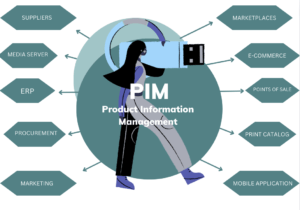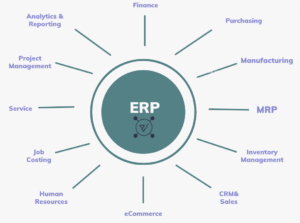PIM and ERP are two key types of data management systems. When considering both, it is important to differentiate between them. Hopefully, this article will help you make a knowledgeable decision by comparing and contrasting these two systems. Additionally, we can help you find the right Product Information Management solution for your business.
What is PIM?
The Product Information Management system is responsible for storing, processing, and maintaining customer-facing product information. As opposed to an ERP’s product information section, PIM is focused on networking and provides specialized functions for managing product data. It enables you to subscribe to data sources, publish your content to listening systems, and maintain data quality management (DQM). Multiple output channels, partners, and distributors can collaborate seamlessly with PIM.

Furthermore, a PIM is specifically built to start subscribing to content from other sources and publish them to listening systems. This could be print, website(s), your native mobile commerce app, or a marketplace.
Even though this could also be done with an ERP, it would require considerably more effort, as the level of configurable automatization is lower than that of a PIM. There would be no guarantee it would keep working after an ERP upgrade, or change in interfacing systems.
Questions? Schedule a free call with a PIM specialist
Find out how we can help you with any Product Information Management issue.
Schedule a free callWhat is ERP?
The Enterprise Resource Planning (ERP) software system automates business processes, while the Product Information Management (PIM) software expands ERP’s capabilities while increasing efficiency and sales.Product information is refined for sales-driven marketing content when ERP is the primary system. Sales data from PIM lead to seamless integration with ERP for bookkeeping. The integration of ERP and PIM streamlines operations, improves data quality, and boosts sales.
How does it relate to MDM?
In Master Data Management (MDM), essential data are managed and harmonized across an organization. Data consistency and integrity can be assured with both PIM and ERP systems integrated with MDM. As part of MDM, product information management systems manage, enhance, and enrich product-related data. MDM facilitates the integration of accurate and consistent data across diverse business functions within ERP systems. Coherence and reliability across the organization are ensured by MDM, which serves as a foundational layer for PIM and ERP applications
PIM vs ERP:
An enhanced product experience vs a database of transactional data:
Product information management systems focus on managing product information and improving the product experience, while Enterprise Resource Planning systems maintain a database of transactional data. Product information management systems optimize product information, making it more convenient for customers.ERP systems, on the other hand, prioritize recording and tracking transactions, enabling efficient financial management and supply chain operations.
Taxonomies:
To categorize and classify product information, Product Information Management systems use complicated taxonomies. A taxonomy helps you organize and present products in a structured way, making them easier to find and discover. Despite categorizations, ERP systems mostly focus on financial and operational taxonomies.
Workflows and user interfaces:
They are often integrated into PIM systems so that teams can collaborate and content can be created and enhanced efficiently. Besides that, they have user-friendly interfaces for managing product information. In contrast, ERP systems have workflows and user interfaces that can handle a broader range of business processes.
Overall, both systems serve different purposes when it comes to managing data. ERP focuses on transactional operations and is a foundation for integrated business processes, whereas Product Information Management focuses on product information management. The right solution will help you manage your data efficiently and increase sales by considering their differences.
Want to learn more about PIM?
If you have any questions regarding Product Information Management, from PIM Selection to Implementation or how a PIM would fit in your IT landscape? Feel free to browse our Knowledge Base of articles on everything PIM related.
Visit our Knowledge Base


